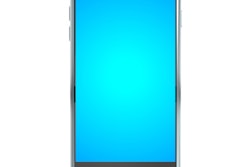
Social media websites are buzzing with speculation that newer Apple iPhones are susceptible to helium leakage from MRI scanners, based on a recent incident at a hospital near Chicago in which more than three dozen Apple devices stopped working after a scanner installation.
Some 40 Apple-manufactured devices stopped working during the routine installation of an MRI scanner at Morris Hospital in Morris, IL, according to an article published October 30 on Ifixit.org. The outage included both iPhones and Apple Watches; devices from other manufacturers were not affected. Some of the devices were completely dead, while others were able to power on but had trouble with cellular connections.
At first it was suspected that the MRI scanner had emitted an electromagnetic pulse, but that would have affected other equipment in the hospital. Nothing else was malfunctioning besides the Apple products.
Upon further investigation, a field service engineer discovered that there had been a helium leak in the building while the MRI magnet was being ramped, venting about 120 liquid liters of helium over five hours. The liquid helium expanded from a liquid to a gas, and the engineer theorized that the helium molecules were able to get inside the Apple devices and interfere with their internal electronics, such as gyroscopes and accelerometers.
Why were only Apple devices affected when other types of smartphones have similar internal workings? The article postulated that it could be related to Apple's recent switch from quartz components to parts called microelectromechanical system (MEMS) timing oscillators. Indeed, Apple's user guide notes that high concentrations of industrial chemicals -- such as helium -- "may damage or impair iPhone functionality."
In the case of Morris Hospital, only iPhone 6 devices and higher were affected, giving credence to the theory that the newer MEMS-based phones were susceptible.
Fortunately, the problem does not appear to be permanent. Most of the devices recovered as the helium inside apparently dissipated, but at least one iPhone continued to have severe problems.



.fFmgij6Hin.png?auto=compress%2Cformat&fit=crop&h=100&q=70&w=100)




.fFmgij6Hin.png?auto=compress%2Cformat&fit=crop&h=167&q=70&w=250)











